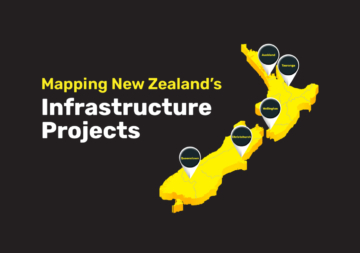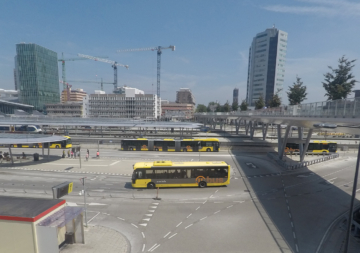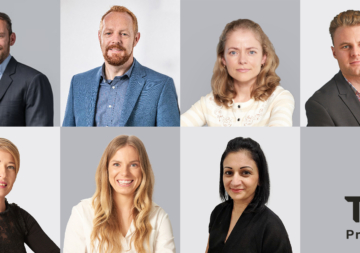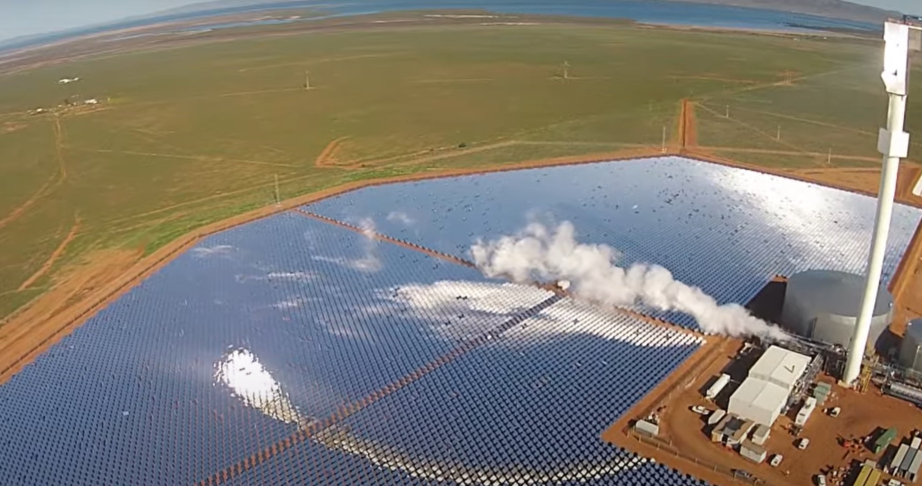
4 May 2022
Reimagining agriculture
It’s fair to ask why anyone would ever attempt to grow half a million tomato plants in the brutal Australian desert. After all, Australia has a diversity of climates, many with perfect natural conditions for harvesting tomatoes. But the idealists at Sundrop Farms had a futuristic vision to farm effectively while reducing reliance on finite resources, including energy, fossil fuels and fresh water. They aimed to pioneer non-traditional methods to demonstrate that we can grow food at any time of the year, with minimum expense or environmental impact.
In 2016, approximately 320 kilometres north of Adelaide in the small South Australian city of Port Augusta, Sundrop Farms opened the only facility of its kind in the world. 20-hectares of commercial greenhouses holding 500,000 tomato plants use sunlight and seawater to produce 17,000 tonnes of fruit each year.
In a global industry slow to progress beyond its heavy reliance on fossil fuels, the Port Augusta greenhouse is a groundbreaking project stemming from a bold vision to reimagine agriculture. We sat down with TSA’s Josh Smith to discuss his role on this incredible project.
Ambitious in concept and size.
Ambitious in both concept and size, the 20-hectares of fully automated and undercover greenhouses is the size of 28 full-size soccer fields and dwarfs a typical greenhouse. Josh recalled a conversation with one of Australia’s major greenhouse operators, “He thought they were crazy. Greenhouse operators that have been in business for decades would never dare attempt to build a 20-hectare facility in one go. It was very, very ambitious.”
Producers traditionally use diesel-fuelled boilers to heat and run a greenhouse – an expensive practice both financially and environmentally. Instead, Sundrop Farms uses 30 million litres of near-boiling water. Held in two tanks (each about the height of a five-storey building), the water is superheated to almost 600 degrees celsius using 23,500 mirrors which redirect sunlight to a boiler at the top of a solar tower. This superheated water runs through a condenser and turbine connected to a generator to produce heat energy and electricity.
The conventional approach to greenhouse cooling uses automated vents in walls and roofs which open to allow the flow of cooler air, but with Port Augusta temperatures capable of reaching 50 degrees celsius, Sundrop Farms had to think outside the box. Seawater is extracted from the Spencer Gulf via a 6 kilometre pipeline before passing through large-scale evaporative coolers, which run the entire length of the greenhouses.
Seawater is also used for irrigation purposes. Using a Multi Effect Desalination (MED) unit, the water is purified to feed the plants. With environmental priorities, there was a significant focus on ensuring the salinity levels of the Gulf remained unaffected. Josh noted that numerous tests showed that the Gulf water within 20 metres of the discharge point recorded the same salinity levels as water up to a kilometre away, demonstrating how quickly and effectively the salt is dispersed.
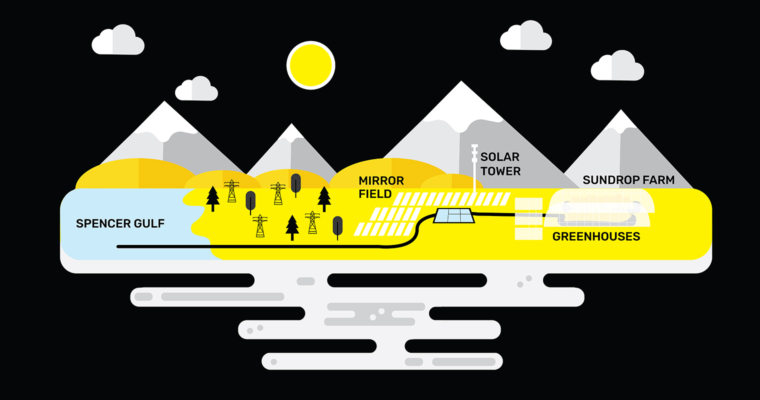
An unprecedented global achievement.
Josh acknowledged the project’s significant outlay costs of just under $200 million; however, innovative systems allow Sundrop Farms to harness Australia’s arid climate to access unlimited and virtually free heating, cooling, energy and irrigation. And while there are redundancy measures – the entire system is backed up by power and water mains to ensure crops succeed – the facility effectively runs off the grid.
Perhaps most importantly, the project represents an unprecedented achievement in terms of sustainable agricultural practise. It also represents a pivotal moment in TSA’s South Australian history.
A juicy slice of history.
In 2014 Josh Smith and Scott Schiphorst formed ProManage Australia, a South Australian project management business. The same year, a mutual connection shared engineering drawings for a “crazy farm project” with the pair over coffee. ProManage was soon engaged in the role of project manager by Sundrop.
Josh describes the Sundrop Farm contract as a seminal point in ProManage’s history, “The Sundrop Farms project got everybody’s attention. It was a big project that was bright and shiny with this really great story. It made it very easy to talk to clients and sell our services.”
From that point, ProManage proliferated, bringing General Manager, Gary Neave onboard and rapidly growing their headcount. In early 2021, the thriving business (which had grown to 40) was acquired by TSA Management, with Josh and the team now spearheading TSA’s South Australian operations.
A Dane, a Dutchman and an American walk into a tomato farm.
Sundrop Farms was a global collaboration between various visionaries, entrepreneurs and environmental specialists. In 2010, with then CEO Philipp Saumweber at the helm, the startup embarked on a three-year pilot program. The pilot successfully proved the viability of the group’s concept – to run a farm purely on renewable and sustainable resources.
Sundrop Farms then enlisted global specialists in commercial-scale greenhouse facilities: Aalborg CSP, a Danish renewable energy specialist; Van der Hoeven, a Dutch company specialising in high-tech greenhouses; and eSolar, an American producer of Solar Collector Systems.
Contributing to the project’s cost from his own pocket, Saumweber also approached private equity group KKR & Co. Inc for the bulk of the funding. However, just as Sundrop’s vision seemed set to become a reality, KKR balked at the level of risk the project posed. Josh explained, “You’ve got all these non-Australian firms working together, all with their own control systems, and all these really complex interfaces that nobody really understands.” With KKR insisting on a single point of accountability, John Holland and ProManage entered the picture.
The project was administered under an EPC contract, which essentially meant the contractor, John Holland, was responsible for all the engineering, procurement, and construction activities to deliver the completed project to Sundrop Farms. Josh is candid about the level of complexity involved, describing the 500-page contract as “way over the top.”
ProManage was responsible for managing the delivery of the project, including the construction and commissioning and system-wide integration and startup from inception to operational handover. Josh and the team provided project management services, including construction supervision, site-based surveillance and quality assurance.
Systems, engineering and technology company, Frazer-Nash Consultancy, played a valuable role as owner’s engineer. Working as part of the project management team, they ensured the project’s technical detail was effectively managed.
Cutting it vine.
Five years since Sundrop Farms opened, Josh remains passionate about the project. He recalls in vivid detail stories of the farm, the people he worked with, and how it all came together. Unsurprisingly, he learned a lot about tomatoes. And growing tomatoes, it turns out, is a precise art with little room for error.
The lead time for ordering tomato plant seedlings on the scale produced at Sundrop Farms is approximately five months. Josh explained, “You can’t just ring the local nursery and ask for half a million tomato plants. They have to be ordered in advance so a nursery can secure the seeds, germinate the seeds and then transfer them to another nursery to grow into seedlings”.
Once these seedlings reach a specific size, there is a limited window for the plants to be transported to a greenhouse before a crop perishes – particularly in the middle of the desert.
As Josh tells it, an intense stage of the project was the greenhouse fitout. Sundrop Farms was expecting the arrival of their first 500,000 tomato plants, “So that was the critical path. Everything focused around the delivery of those plants, and if we missed that window, we lost five months of productivity.” Under the pressure of this inviolable deadline, the team knuckled down.
In January, in the peak of the Australian summer with temperatures reaching 47 degrees, a crew of 35 worked by night to avoid the searing desert temperatures. Works included floor coverings, irrigation pipework, gutters to mount the plants, crop wires, and the installation and painting of the heating rails – all coordinated and executed in a whirlwind of activity. “It was managed like an event. You could not slip a week or even a day. Everything had to be fully operational and ready for those plants”.
The transition from a construction site to a fully functioning facility with close to 200 employees was done in stages. The team split the site, commissioning two of the four greenhouses at a time. Sundrop Farms had employed local specialists, including a human resources manager, a head grower and an operations manager. Still, someone had to steer the ship and Josh and his team were at the helm. Despite the sheer size and complexity involved, they ran the transition like any other project – everybody had deliverables and accountability. The schedule was reviewed twice weekly, with extra resources brought in to provide support as necessary.
And in the end, in the face of severe time constraints and the considerable logistics involved, they made it. Five hundred thousand tomato seedlings arrived in Port Augusta to a fully operational, first-of-its-kind facility in the middle of the Australian desert.
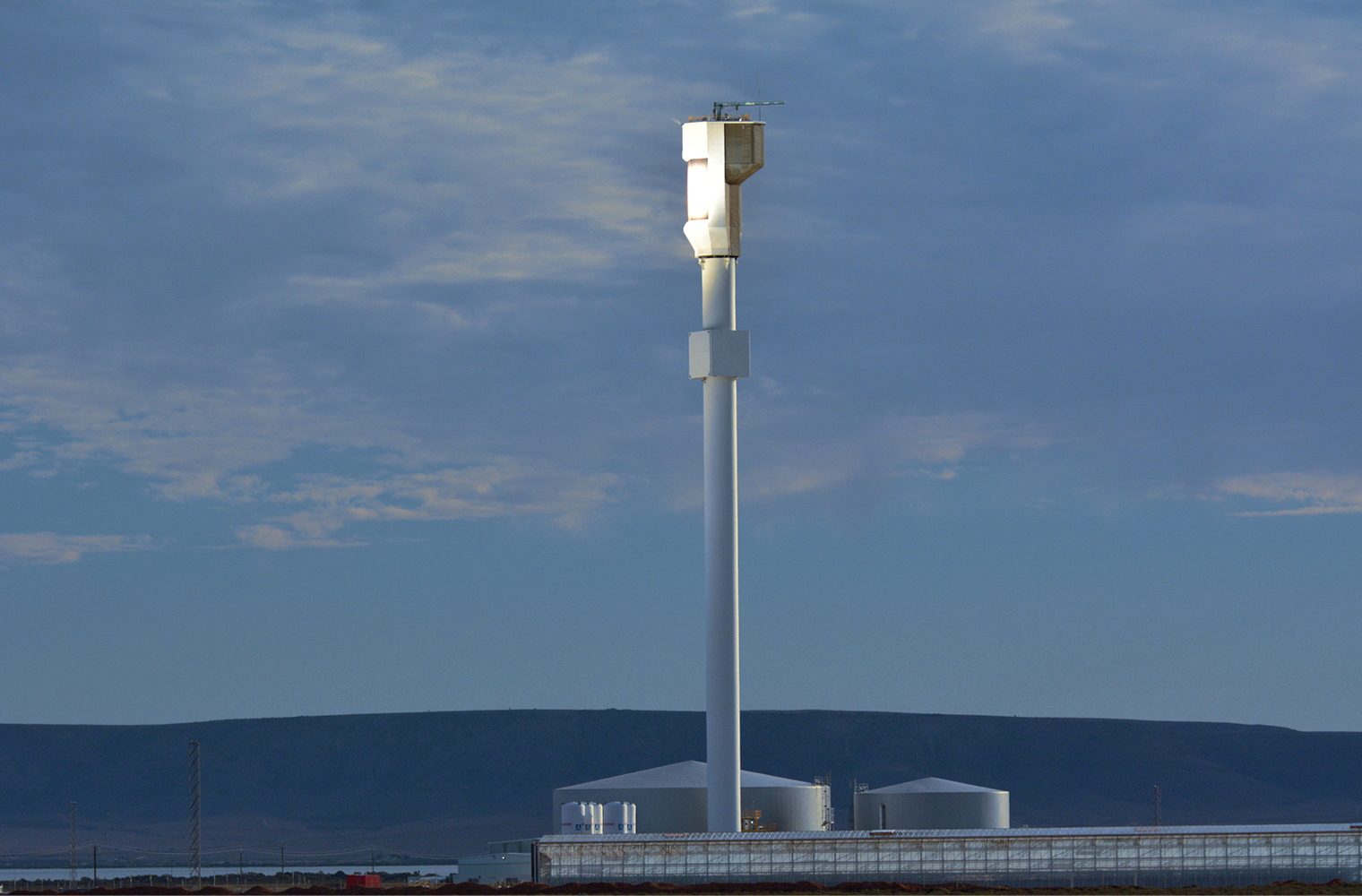
Beyond beleaf.
Sundrop Farms was a huge deal for the fledgling ProManage business, the global agriculture community and a port city that had historically relied on coal-fired power stations. Josh revealed that the last of these was demolished as Sundrop Farms was completed, “It was quite ironic because we replaced a 100 metre tall coal-fired chimney stack with a world-first 127 metre solar tower.”
The juxtaposition couldn’t have been greater or timing better. Keenly aware of the impact of the powerplant’s decommissioning on the local community, Josh and the team encouraged John Holland and their subcontractors to “go local.” As a result, many who’d lost work found employment at Sundrop Farms, which hired up to 300 during construction and between 160 and 200 post-construction.
Job security wasn’t the only benefit for the residents of Port Augusta. For years the powerplants and local coal mines had bolstered the city economically, but people increasingly believed it came at a cost. Apart from the known environmental impacts, a 2010 study examining lung cancer rates in Port Augusta found a cluster doubling the Australian average – an alarming statistic.
Sundrop Farms also generated an astonishing amount of positive publicity for the local community. Not only did it make a stir globally (featuring in countless international publications), but the Australian people also sat up and took notice. With South Australian premier Jay Wetherill in attendance, the farm opened to much fanfare. With Sundrop Farms acting as the benchmark, Port Augusta has since positioned itself as the ‘renewable capital of Australia.’ Today, the city is home to multiple sustainability initiatives, including Bungala Solar Farm, Nexif Energy’s solar PV project, ZIMEC Battery and most recently, DP Energy’s Renewable Energy Park. Not bad for a city once blanketed in grimy layers of ash from outdated powerplants.
That’s a wrap.
The Sundrop Farms project was a massive success and continues to be a beacon of sustainable development worldwide. Josh is justifiably proud of the enormous challenges overcome to get the project across the finish line, “It was a real team effort. And a good example of working well with a contractor against all odds, in really tough conditions. The most critical element in the whole project was the delivery of the tomato plants, and we managed to get there in the peak of summer without throwing the contract at each other.”
